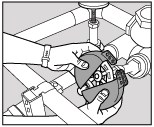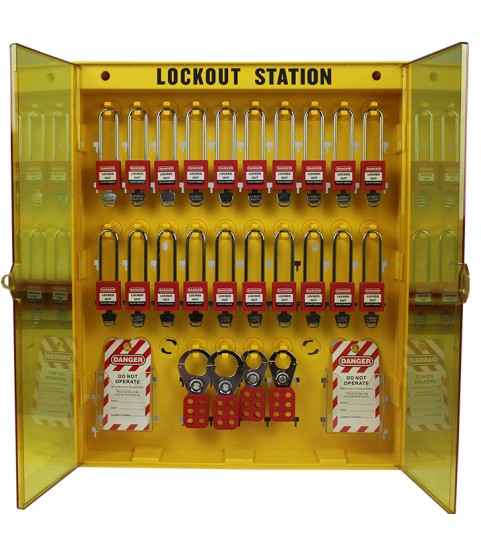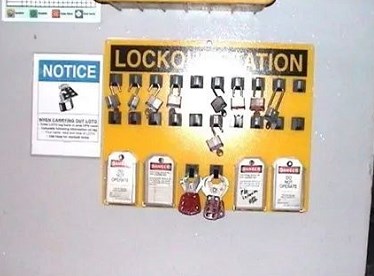News
-

Standards By Country
Standards by country United States Lockout–tagout in the US, has five required components to be fully compliant with OSHA law. The five components are: Lockout–Tagout Procedures (documentation) Lockout–Tagout Training (for authorized employees and affected employees) Lockout–Tagout Policy (often...Read more -

Site policies regarding lockout–tagout
Site policies regarding lockout–tagout A site lockout–tagout policy will provide workers with an explanation of the safety goals of the policy, will identify steps required for a lockout–tagout, and will advise of the consequences of failure to carry out the policy. A documented lockout–tagout po...Read more -

Group lockout
Group lockout When two or more people are working on the same or different parts of a larger overall system, there must be multiple holes to lock the device. To expand the number of available holes, the lockout device is secured with a folding scissors clamp that has many pairs of padlock holes c...Read more -

LOTO Key Steps 2
Step 4: Use the Lockout Tagout device Use only approved locks and tags Each person has only one lock and one tag at each power point Verify that the energy isolation device is maintained in the “locked” position and in the “safe” or “off” position Never borrow ...Read more -

LOTO Key Steps 1
LOTO key steps The first step: Prepare to shut down equipment Area: clear obstacles and post warning signs Yourself: Are you physically & mentally ready? Your team mate mechanical Step 2: Turn off the device Authorized person: must disconnect power or shut down machinery, equipment, processes...Read more -

Contractor lockout training requirements
Contractor lockout training requirements Lockout training includes contractors. Any contractor authorized to service equipment must meet your lockout program requirements and be trained on the written program’s procedures. Depending on your written program, contractors may need to perform group ...Read more -

Temporary removal of lockout or tagout device
Temporary removal of lockout or tagout device Exceptions where a zero-energy state cannot be achieved due to the task at hand are covered under OSHA 1910.147(f)(1).[2] When lockout or tagout devices must be temporarily removed from the energy isolating device and the equipment energized to test ...Read more -

Lockout tagout program components and considerations
Lockout tagout program components and considerations Elements and compliance A typical lockout program can contain more than 80 separate elements. To be compliant, a lockout program must include: Lockout tagout standards, including creating, maintaining and updating equipment lists and hierarchi...Read more -

What is the difference between lockout and tagout?
What is the difference between lockout and tagout? While often intermingled, the terms “lockout” and “tagout” are not interchangeable. Lockout Lockout occurs when an energy source (electrical, mechanical, hydraulic, pneumatic, chemical, thermal or other) is physically isolated from the system tha...Read more -

Conduct on-site lockout Tagout training activities
Conduct on-site lockout Tagout training activities In order to improve the safety awareness of employees, improve their operation skills, and ensure that on-site employees quickly master the application of lockout tagout tools, lockout tagout training activities are carried out for well team cadr...Read more -

Brief history of LOTO
Brief history of LOTO The OSHA lockout tagout standard for the Control of Hazardous Energy (Lockout/Tagout), Title 29 Code of Federal Regulations (CFR) Part 1910.147, was developed in 1982 by the United States Occupational Safety and Health Administration (OSHA) to help protect workers who routi...Read more -

Lockout/Tagout FAQs
Lockout/Tagout FAQs I can’t lockout a machine. What do I do? There are times when locking out a machine’s energy-isolating device is not possible. If you find this is the case, securely attach a tagout device as closely and safely as possible to the energy-isolating device. Make sure ...Read more

